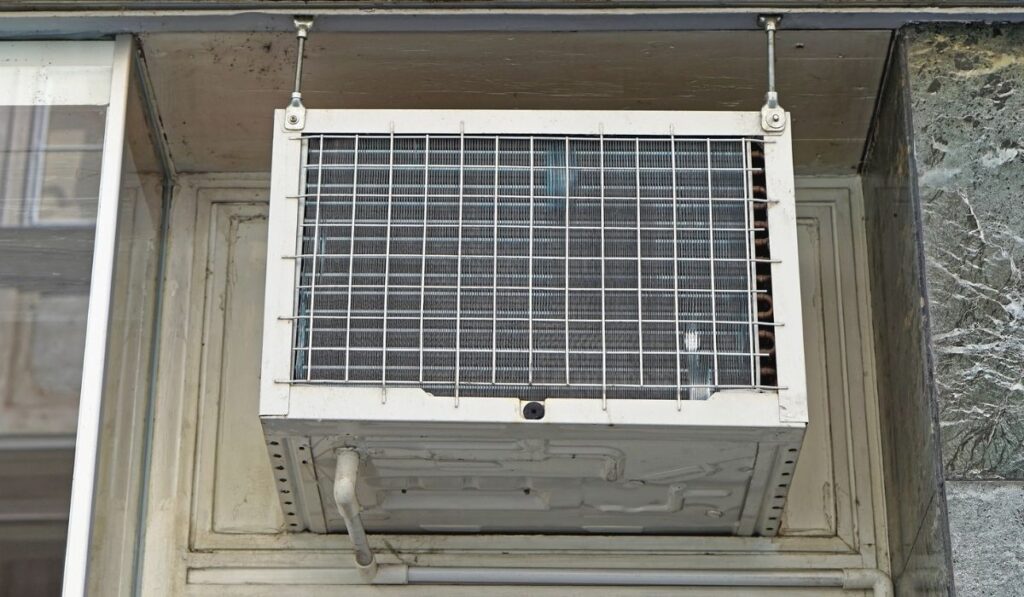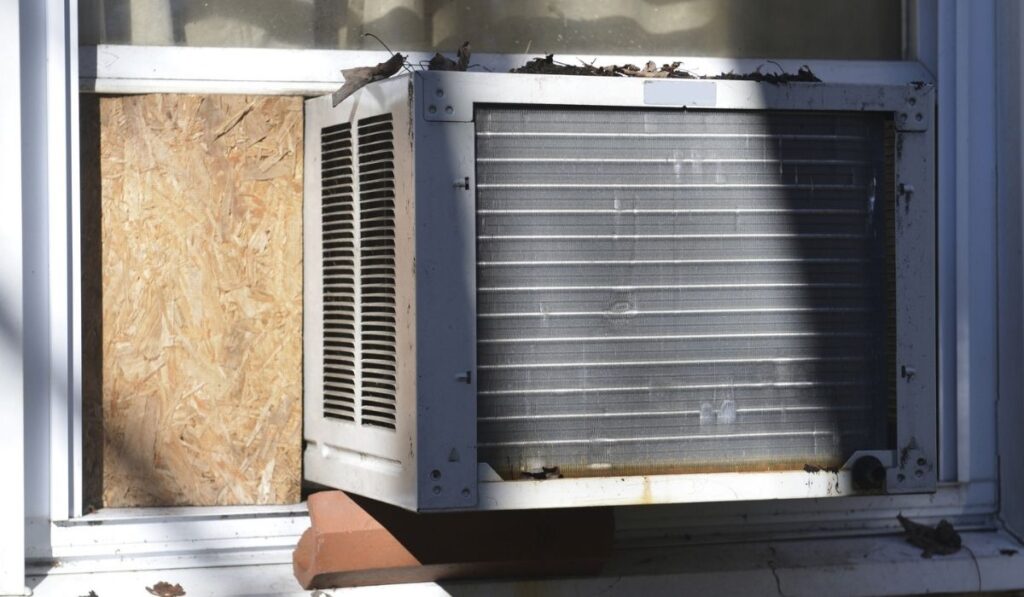It might be startling to see water pouring from your window AC suddenly. And water leaking is one of the most prevalent window air conditioner issues. But while pondering where the water is coming from and how to stop it, water will leak and damage your interior walls, carpet, and furniture.
Window air conditioners leak, or at least they should. However, drops in the incorrect position or the improper volume of leaking water may indicate a malfunction. But some condensation is normal and expected in certain conditions.
This post will explain why window air conditioners drip and leak water from the front. You will also find solutions to stop your window air conditioners from spreading by continuing to read.
Why do Window Air Conditioners Drip?

Air conditioners do more than keep the air cool.
The cooling coil or evaporator of the air conditioner collects moisture from the room. Then the water vapor cools to liquid and settles on cold surfaces in the unit. And by lowering the humidity, they assist in conditioning the air and promote comfort.
The underlying idea is comparable to how condensation forms on an iced drink. For example, if it is scorching and humid outside and the thermostat is set to a low temperature, the unit will create condensation since it works extremely hard to cool your home.
Why Is Your Window AC Leaking Water From the Front?
There are a few reasons why your AC could be leaking, including:
Condensation Drain Blocked
A clogged condensation pipe is typical for a window AC leaking water. The condensation pipe’s function is to discharge condensation from the overflow pan to the drainpipe. Water will back up and flood if this pipe becomes clogged with debris, dust, sludge, or mold.
Some modern AC units automatically shut off if they detect overflow. So if you have an older AC type, you are more likely to have a clogged condensation drain.
Condensate Pan Damage
If your AC unit is older, the drain pan may be rusty or split, allowing water to enter. Condensate pans are often positioned beneath the AC unit and are simple to inspect. Check the flashlight for corrosion, holes, or fractures.
Dirty Filters
When air filters become too filthy, they might obstruct airflow over the evaporator coil, causing it to become too cold and freeze over. In addition, it might drip surplus water into the pan and overflow it when it melts, causing your window AC to leak water.
It’s a good idea to update your air filter every few months. It is advisable to examine it more regularly during the hot months every couple of weeks.
Low Refrigerant Levels
Low refrigerant levels, such as a filthy air filter, will cause the overall pressure in the AC unit to drop and the evaporator coil to freeze. As a result, extra water overflows the drain pan when it melts, potentially flooding the area and causing your window AC to leak water.
Low refrigerant levels can sometimes be rectified, but in many situations, they are an indication that your entire unit has to be replaced.
Condensate Pump Failure
A condensate pump will transport the water outdoors for homeowners who have their AC unit or furnace placed in the basement. If this pump is broken or improperly fitted, it might be the source of your leaking air conditioner. It must be fixed or replaced if this is the case.
Inadequate Installation
Water flowing out the front of the unit, caused by installation problems, is perhaps the most typical problem with air conditioner condensation.
Such drops can damage furniture or floors and cause mold problems. To assist in good drainage, the back of the air conditioner should be somewhat lower than the front.
If you recently had a brand new AC unit installed and it’s already leaking, it’s possible it was poorly placed or was too big or too small for your home. But you can get assistance from an HVAC specialist.
How Do You Stop Your Window Air Conditioner From Leaking?

Here are some ways to prevent your window air conditioner from leaking:
1. Insulate Around the AC
Air leaks might cause water to spill from the sides or front of the air conditioner. In addition, warm outside air may condense when it comes into contact with the cold air surfaces if the air conditioner is not adequately sealed.
You may need to caulk and insulate around the air conditioner to reduce condensation. This will also increase efficiency and maybe lower energy expenses.
2. Fix Condensation Drain Blockage
It would be best if you cleared the obstruction. Locate the condensation drain by opening the rear of the window AC unit. If it’s clogged, use anything tiny––a needle, toothpick, or thin screwdriver––to remove the obstruction by putting the thin object into the drain and wiggling it around.
3. Fix the Damaged Condensate Pan
To fill the gap in the bottom of the window AC unit, use water-resistant adhesive or resin.
